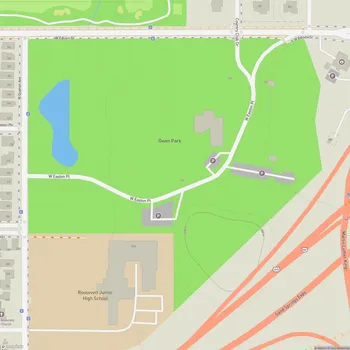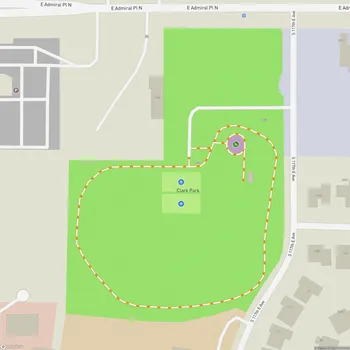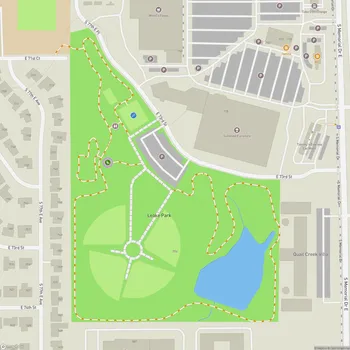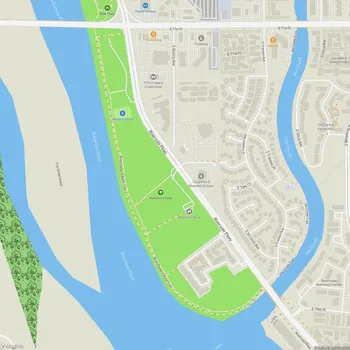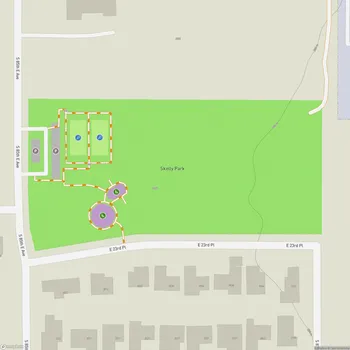John Hope Franklin Reconciliation Park
Interactive Park Map
About John Hope Franklin Reconciliation Park
A Space for Remembrance and Reflection
Tucked between historic Greenwood and downtown Tulsa, the 2.5-acre John Hope Franklin Reconciliation Park commemorates difficult history and offers a space for enduring hope. Opened in 2010, this thoughtful space commemorates the 1921 Tulsa Race Massacre while honoring the broader story of African Americans in Oklahoma.
What makes this park especially significant is its location - it borders what was once Black Wall Street, a thriving African American business district devastated during the massacre. In 2018, the park was designated as a Literary Landmark honoring its namesake, Dr. John Hope Franklin, the celebrated historian whose work helped illuminate this often-overlooked chapter of American history. The park's inclusion in the African American Civil Rights Network in 2020 further cements its importance as a site of memory and education.
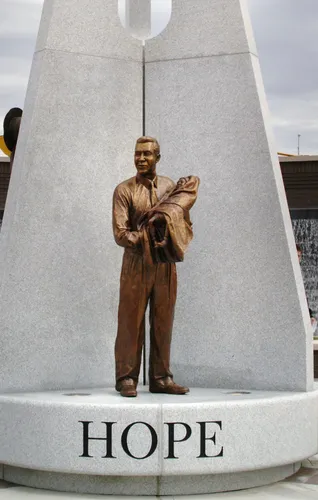
Art That Tells Hard Truths
At the heart of the park are two striking artistic elements created by sculptor Ed Dwight. Hope Plaza features a 16-foot granite structure surrounded by three bronze sculptures based on actual photographs from 1921. These pieces don't shy away from difficult emotions - they depict scenes of hostility and humiliation, but importantly, also of hope.
Standing tall at the center of the park is the Tower of Reconciliation, a 25-foot memorial pillar that chronicles the journey of African Americans from their forced migration to Oklahoma through the civil rights movement. The detail and craftsmanship here rewards those who take time to study its imagery.
Thoughtful Design Elements
The park's landscape flows naturally with rolling lawns connecting two circular plazas via a linear path. This creates an interesting visual journey as you move through the space.
The healing walkway and waterfall offer spaces for quiet contemplation. There's symbolism in these features too - the falling water represents tears shed by the Black community, while a wall of water symbolizes the decades of silence that surrounded the 1921 tragedy.
A metal picket fence encloses the park, with diverse plantings including deciduous trees, vines climbing steel arbors, and evergreens that offer welcome shade on hot Oklahoma days.
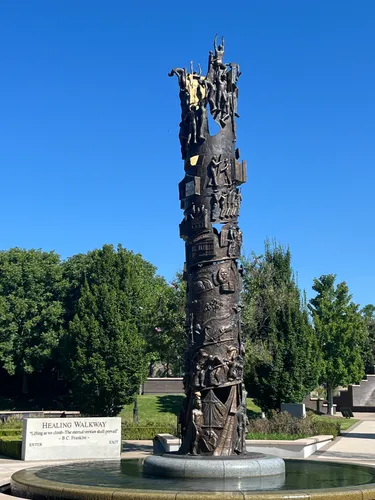
Learning Through Landscape
Beyond its memorial aspects, the park functions as an open-air classroom. Informative plaques featuring historical context and meaningful quotes line the perimeter, helping you understand both the artwork and the events that inspired them. The educational elements extend beyond Black history to acknowledge the experiences of Native Americans in the region as well.
Many visitors note how these educational elements help put the tragic events of Tulsa's past into perspective, making history tangible in a way that books alone cannot.
Visiting the Park
You'll discover the park well-maintained and conducive to quiet reflection on its powerful historical themes. Its proximity to the Greenwood Rising museum makes it natural to visit both sites for a more complete understanding of this chapter in American history.
If you're interested in a deeper experience, walking tours are available by reservation, led by knowledgeable guides who can tailor the information to your interests and prior knowledge.
Note that the nearby Pathway to Hope, located just west across the street behind the ballpark, offers a complementary experience to the reconciliation park but doesn't appear on many maps - it's worth seeking out if you have time.
All Features & Facilities
Nature & Wildlife
Water Features & Activities
Visitor Services
Photo Gallery (click to enlarge)


ParkMagnet Score
Good Park
Park Size
Opening Hours
Weather
Top Restaurants Near John Hope Franklin Reconciliation Park
Noche Woodfired Grill & Agave Bar
492 feet110 N Elgin Ave Ste 140, Tulsa, OK 74120
Upscale Mexican restaurant featuring wood-fired dishes, creative cocktails, and exceptional service in downtown.
Que Gusto
686 feet105 M.L.K. Jr Blvd, Tulsa, OK 74103
Authentic Ecuadorian counter-serve spot featuring handmade empanadas, fresh ceviche, and flavorful comfort food dishes.
Barons on 1st
0.3 miles302 E 1st St, Tulsa, OK 74120
Upscale fine dining establishment featuring expertly crafted dishes, creative cocktails, and exceptional service in downtown.
JINYA Ramen Bar - Tulsa
0.4 miles416 E 2nd St S, Tulsa, OK 74120
Specializes in authentic Japanese ramen with flavorful broths and attentive service in a cozy atmosphere.
Top Hotels Near John Hope Franklin Reconciliation Park
Fairfield Inn & Suites Tulsa Downtown Arts District
0.2 miles111 N Main St, Tulsa, OK 74103
Modern hotel offering comfortable accommodations with complimentary breakfast in the vibrant downtown arts district.
